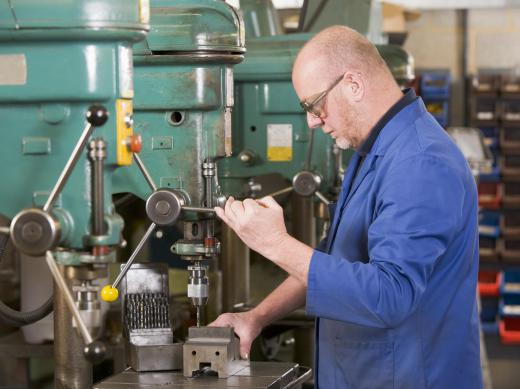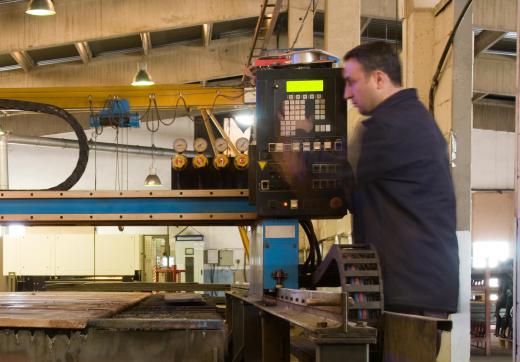Machining is a form of manufacturing used to create objects out of metal. During this process, workers cut away materials to alter the appearance and shape of a product. Machining serves as an alternative to other forms of production processes, including molding or casting. It is one of the most effective methods of creating very fine, detailed objects, which are often not feasible through casting and molding techniques. Machining can be used to make everything from steel fasteners to metal jewelry, as well as larger objects like hand tools and automotive components.
This metalworking technique actually involves many types of processes that can be used to give metal the desired shape and finish. These techniques are often divided into four categories, and may be used together to produce a single product. Drilling is one of the most basic types of machining. During the drilling process, workers use a metal bit to cut holes in the metal. For example, drilling may be used to cut holes for fasteners in a metal kickplate used to protect a door.

Turning is another form of machining used to shape metal. During turning, metalworkers place the material on a piece of equipment known as a lathe. The lathe rotates the metal so that it can be shaped or cut using hand tools or specialty bits. This type of process can be used to create a threaded screw or similar fastener.
During milling, workers use a piece of equipment known as a milling machine. This equipment uses metal bits to cut material out of the surface or face of an object. The tool or bit is fixed in place, and the machine guides the metal around these cutting tools. This type of machining process may be used to cut a logo into a steel plate, or to form special tools.

Grinding is the final category of machining techniques. This relatively simple process involves using a stone-grinding wheel to shape or polish metal. This technique may be used to sharpen a metal hand tool or to give metal building materials a satin finish.
Machining is just a single part of a larger manufacturing process. Metal manufacturing begins with design, then proceeds through manufacturing and production. Machining may be used to shape the metal and create the object, or may serve only as a method of finishing the metal to give it the desired appearance. After machining is complete, the object must be finished and assembled before it is ready for sale.
